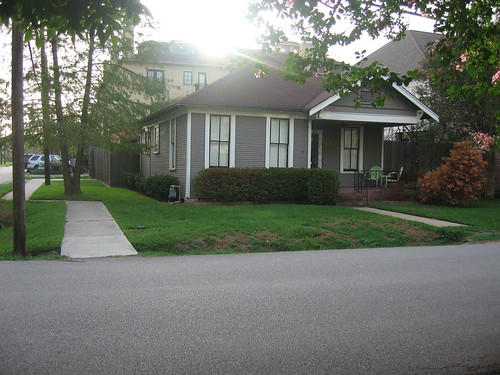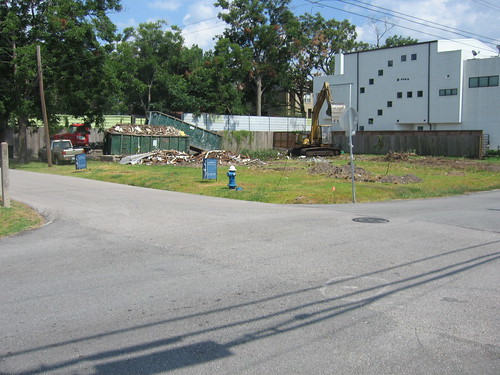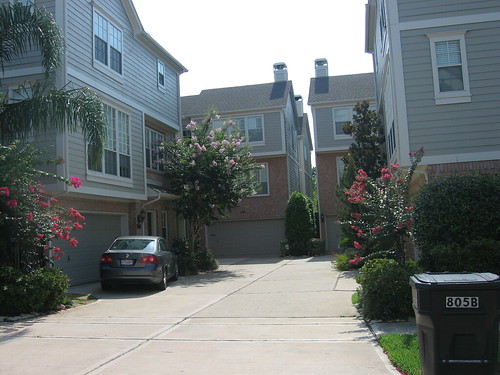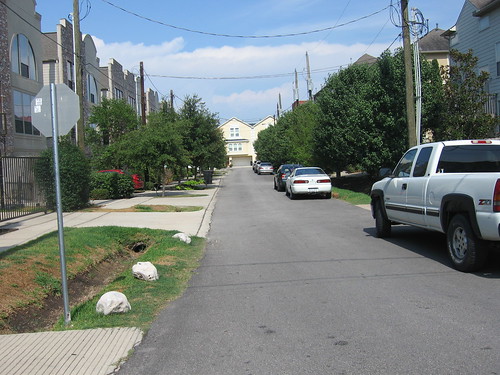This post is two posts in one. The first part is a guest piece by regular reader Jim Zavist. The second part is a press release about a related event at SLU this Friday.
—-
The Mortgage Crisis
A guest editorial by Jim Zavist, AIA
The current mortgage “crisis” has generated a lot of discussion and created a lot of potential “solutions”. I’m also old enough to remember the previous “crisis”, the Savings and Loan Meltdown of the 1980’s, and I’m seeing one big difference between then and now. The biggest change now is that there seems to be an assumption that homeowners who can’t pay their mortgages somehow “deserve” to be given a way to stay in “their” homes. Back in the ’80’s, homes were foreclosed, people were evicted, and because the S&L’s couldn’t deal with the volume of foreclosed properties, the federal Resolution Trust Agency ended up with a lot of properties that were resold at whatever the market said they were worth. So, while some people lost their homes, just as many people got some great deals and were able to start down their path to the American Dream.
Bottom line, if you’re still able to make either your original or your current mortgage payment, you won’t be living on the street. Yes, you’ll probably be paying rent instead of a mortgage, but guess what, if you can’t sell your home and you can’t refinance your home, because its value has dropped, maybe substantially, you don’t have any equity! Whatever money you put down and whatever you invested in improving the property is gone. It’s the big downside to investing in anything – sometimes things go poorly and you lose some or all of your investment! Sure, it affects your credit rating negatively if you have to give up your home to foreclosure or a short sale. It may even seem that it’s not “fair”. But it’s part of being an adult – it’s time to cut your losses and move on.
As has been noted multiple times in the media over the past few days, 92% of the mortgage holders today are still making their payments on time – only 8% are falling behind. I’m one of those 92%. I’ve been making mortgage payments for 25 years; unfortunately, not all on the same property (otherwise it could be close to being paid off). But, before I bought my first place, I became educated. I’ve always put at least 10% down and always had a fixed-rate mortgage (including one at 12%!), so I’ve never had to face rates that adjusted upwards, as many ARM’s are apparently prepared to do soon. I also never bought into refinancing every time the rates dropped half a point or to finance extraneous luxuries (like a car or a cruise) by pulling out the last couple of years’ appreciation. And I’m not alone – 9 out of 10 people are riding out the current drop/correction in home values, even though it may mean cutting back in other areas. Real estate shouldn’t be viewed as a piggy bank. It should be viewed as a long-term investment, one that will, hopefully, eventually be completely paid off.
With the clarity of 20/20 hindsight, we’re relatively fortunate that the St. Louis area didn’t see the huge increases in home values that other parts of the country experienced, since we’re not seeing a huge drop, either. Sure, we have pockets where too many property owners succumbed to the lure of easy money, but, overall, we don’t seem to being hit nearly as hard as places like, say, Tampa, where property values are down nearly 40%. Because of that, and even though I agree the government needs to do “something” to “fix” the economy, I’m not all that comfortable with several of the President’s proposals to “help people stay in their homes”. The fundamental problem is that home values simply became higher than actual buyers were willing to pay. They will continue to fall until buyers are willing to buy. And while there are concerns being expressed about the availability of credit, in the world of home buying, if you have good credit and an appropriate down payment and you want to buy a home around here, you can do it! Realistically, there is no “right” to home ownership. It’s something that’s earned, and we’re all learning a hard lesson.
Jim Zavist
Local Architect Jim Zavist was born in upstate New York, raised in Louisville KY, spent 30 years in Denver Colorado and relocated to St. Louis in 2005.
—
Property Ownership and Economic Stability Focus of Symposium
at Saint Louis University School of Law
WHO: Saint Louis University School of Law and Saint Louis University Public Law Review
WHAT: Property Ownership and Economic Stability: A Necessary Relationship? This symposium brings together a group of leading scholars and practitioners to examine the relationship between property ownership and economic stability.
WHEN: 8:30 a.m. to 4 p.m.; Friday, Feb. 27, 2009
WHERE: Saint Louis University School of Law, William H. Kniep Courtroom, 3700 Lindell Blvd., St. Louis, MO 63108
WHY: The recent instability in America’s housing markets has demonstrated the complex relationship between property ownership and economic stability for lower-income families. Until recently, many experts argued that low-income families could not hope to achieve the “American dream” without owning their own homes. Increasingly, events from the past year are calling the assumptions underlying these assertions into question.
Leading scholars from prestigious law schools across the country join real estate and urban planning experts — including Richard Baron of McCormack Baron Salazar — to discuss an array of pressing property ownership issues, including barriers to creating affordable housing, property rights in the international context and the changing definition of property ownership in the United States.
The symposium offers 6.0 CLE credits in Missouri.
For a detailed schedule of speakers and topics or to register, go to law.slu.edu/news/conferences/property.











